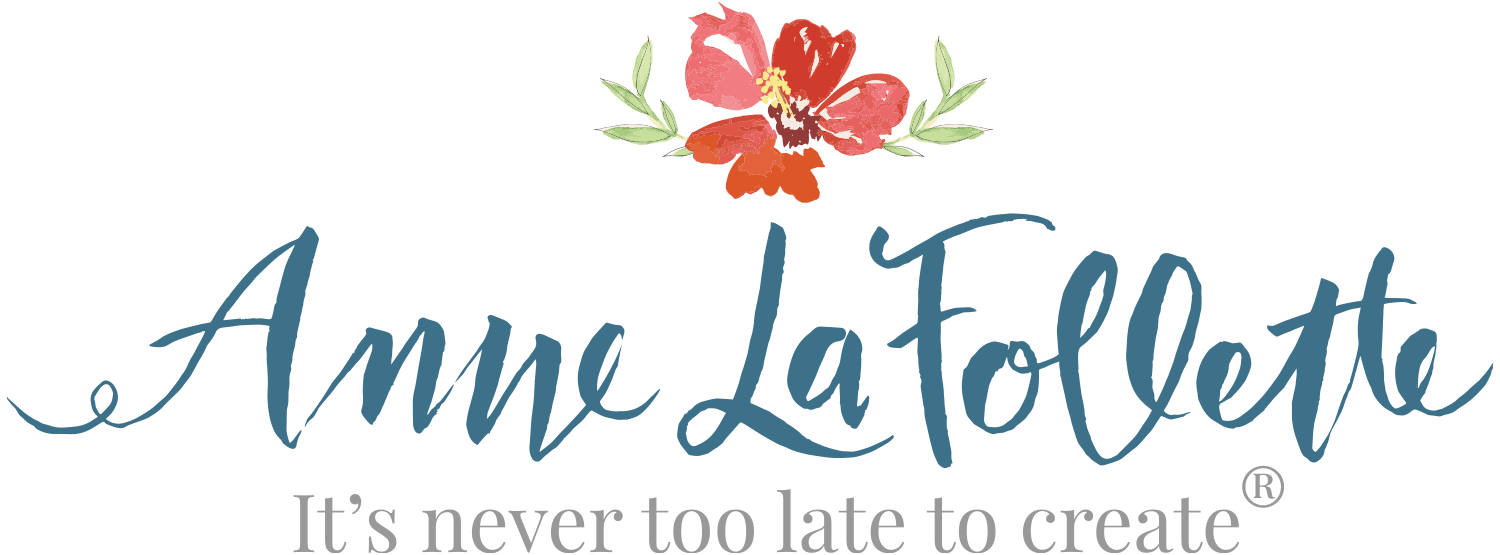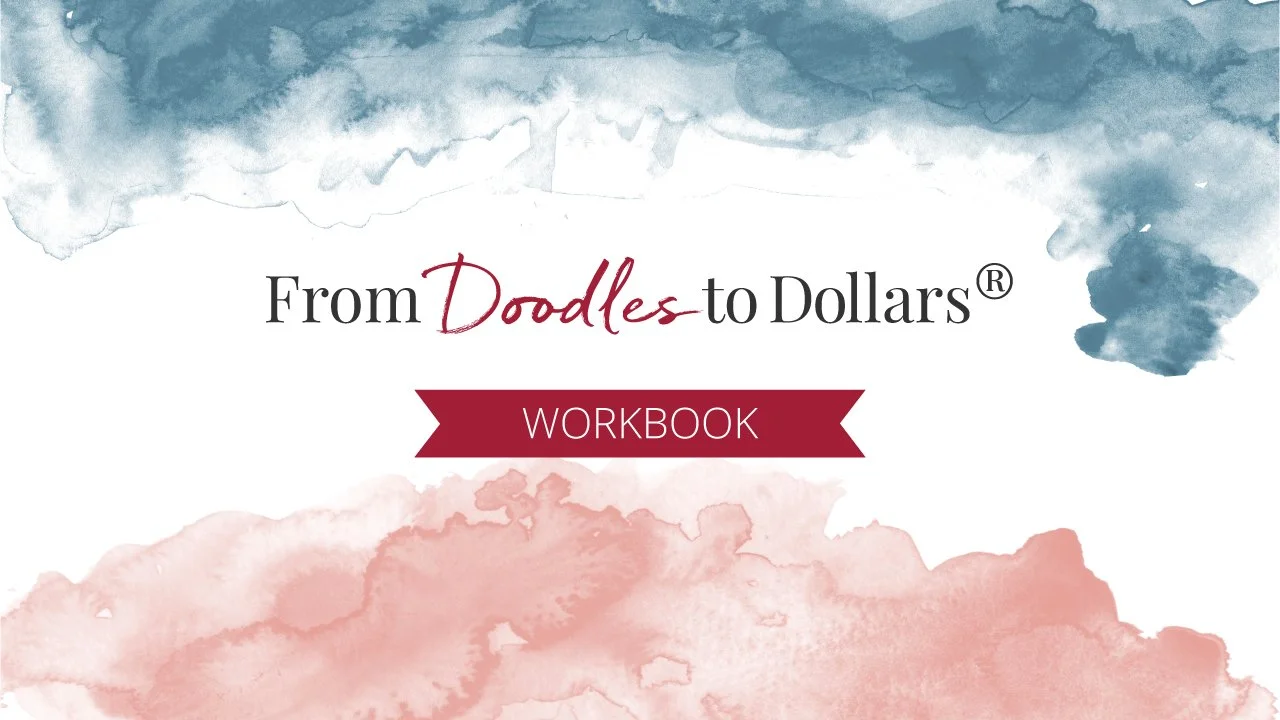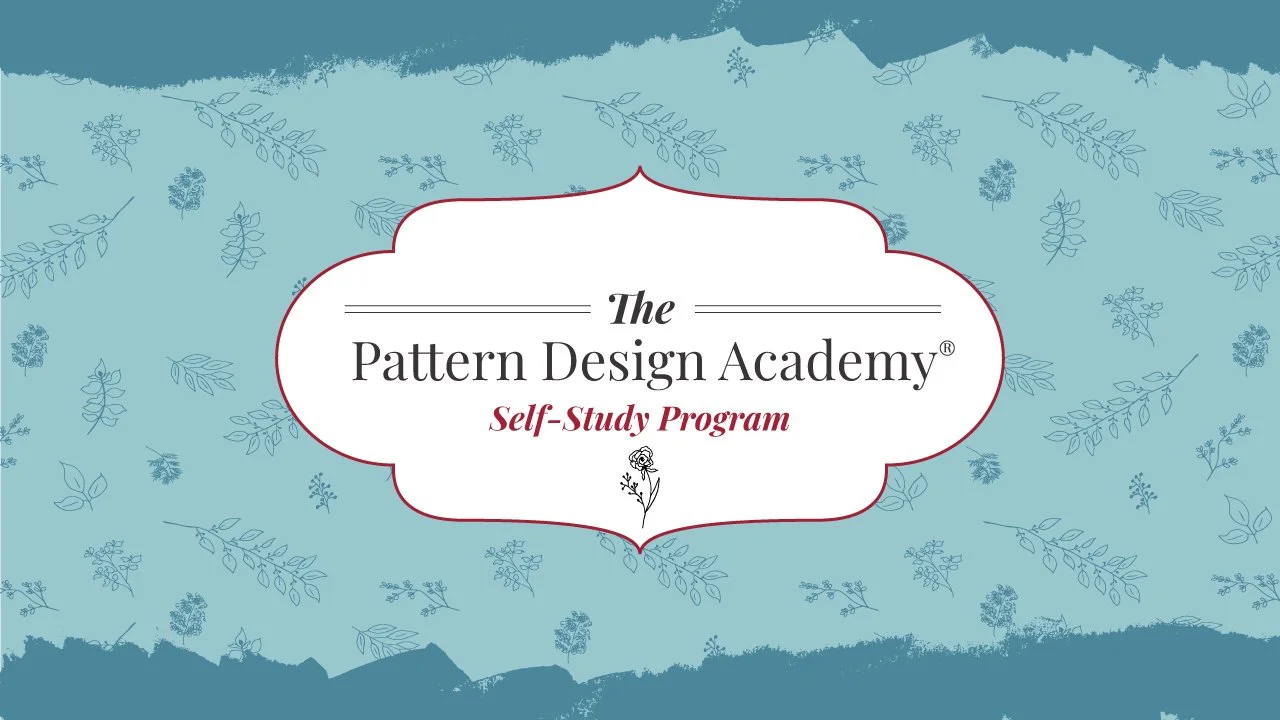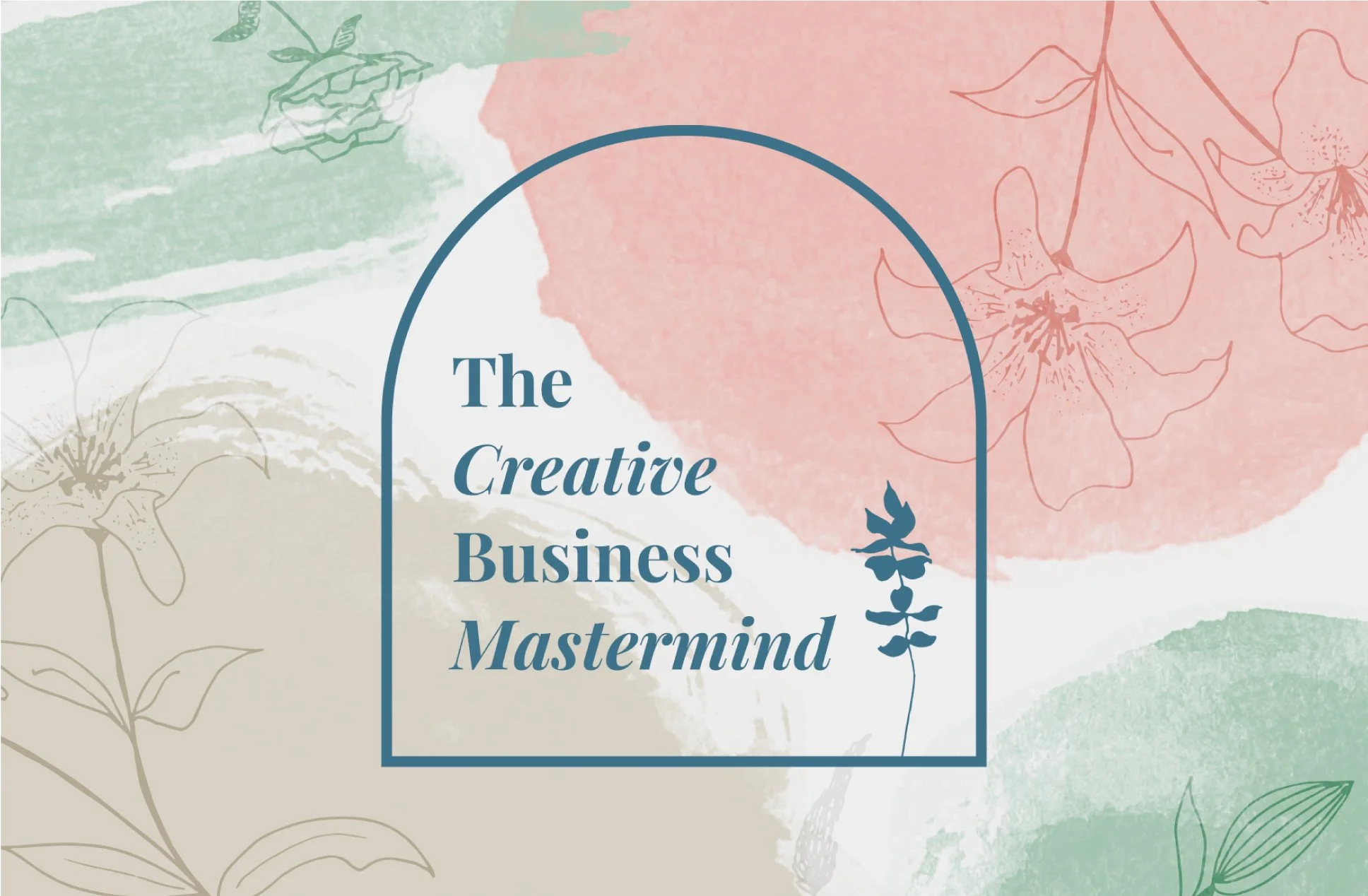The Art of Creative Expression: How to Trust Your Artistic Voice
I have a confession to make, and it might surprise you.
I collect sketchbooks. Beautiful ones with creamy pages and inspiring covers that practically beg me to fill them with ideas. They sit on my shelves like promises waiting to be kept, and yet... I struggle to use them. The blank page stares back at me, intimidating and full of potential, while a familiar voice in my head starts its usual commentary.
"I don't have any good ideas today. Maybe I should wait until inspiration strikes."
"I should finish the laundry first. And check my emails. And organize that drawer."
"I have an idea, but I can't figure out how to translate it onto the page. What if I mess it up and ruin this beautiful sketchbook?"
Sound familiar? If you're nodding along, you're not alone. This internal dialogue is the enemy of creative confidence, and it's something I still work on every single day. The truth is, learning to trust your artistic voice isn't a destination you arrive at – it's an ongoing practice of showing up despite the voices of doubt.
As we move into the cozy months of late fall and early winter, when the world naturally turns inward and we have more time for reflection and creative pursuits, there's never been a better time to cultivate the kind of creative confidence that allows your authentic voice to emerge.
The Myth of the Confident Creative
Here's what I've learned after years of working with thousands of creative entrepreneurs: we think creative confidence means having unwavering belief in every mark we make. We imagine that "real" artists wake up each morning bursting with ideas, sit down at their workspace, and effortlessly create something beautiful.
That's not confidence – that's fantasy.
Real creative confidence isn't the absence of doubt. It's the willingness to create despite the doubt. It's saying "thank you" to those voices that tell you to wait, to worry, to second-guess yourself, and then moving forward anyway.
Creative confidence is less about believing you'll create something perfect and more about trusting that the act of creating – regardless of the outcome – is valuable in itself. It's understanding that your artistic voice develops through practice, not perfection.
This distinction becomes especially important as we approach the holiday season. Right now, you have an incredible opportunity to create gifts for friends and family, to make art that brings warmth and joy to the people you love. You can even share your creativity with strangers by uploading designs to print-on-demand sites, spreading a little beauty in the world while potentially earning some income.
But only if you're willing to trust your voice enough to begin.
The Inner Critic's Favorite Season
There's something about the approaching winter months that can either fuel our creativity or completely shut it down. The shorter days and longer evenings create natural pockets of time for creative pursuits, but they can also amplify our tendency toward self-criticism and overthinking.
Maybe it's the way the year is winding down, making us hyper-aware of all the creative projects we didn't start or finish. Maybe it's the holiday pressure to create something "special" that makes our regular creative practice feel inadequate. Or maybe it's simply that the quieter energy of late fall gives our inner critic more space to speak up.
I've noticed this pattern in my own creative journey and in the journeys of my students. September arrives with good intentions and fresh energy. October brings a slight panic about the approaching end of the year. And November? November is when the inner critic really gets loud, reminding us of every creative goal we haven't achieved and every artistic risk we haven't taken.
But here's what I want you to consider: what if this season of introspection could become your season of creative breakthrough instead?
The same quieter energy that amplifies self-doubt can also create space for genuine artistic exploration. The approaching holidays aren't pressure to create something perfect – they're an invitation to create something meaningful. The end of the year isn't a deadline you've missed – it's an opportunity to finish strong.
Three Strategies That Actually Work
After years of wrestling with my own creative confidence challenges, I've developed three simple strategies that help me move past the mental chatter and into actual creating. They're not revolutionary, but they work – and sometimes that's exactly what we need.
Strategy #1: Remove Every Possible Impediment
I leave my sketchbook and favorite pens out on my table, ready to go. This might seem almost too simple to matter, but it eliminates every tiny friction point that my brain could use as an excuse not to create.
When everything is already set up, I can't tell myself I'll start "after I find the right pen" or "once I clear off the workspace." The tools are there, waiting. The only thing left is to show up.
This principle works for any creative practice. If you're a watercolor artist, leave your paints and brushes set up. If you design digitally, keep your tablet charged and your software open. If you sew, keep your machine threaded with the thread you'll need for your next project.
The goal isn't to eliminate all barriers to creating – it's to eliminate the unnecessary ones that give our resistance something to grab onto.
Strategy #2: Lower the Stakes Completely
Instead of sitting down to "create something good" or "work on that important project," I tell myself: "I'm going to make marks. I don't care what they look like. This is just a way for me to warm up."
This reframe is powerful because it removes the pressure to produce anything worthwhile. I'm not trying to create art – I'm just moving my hand across the page. I'm not attempting to capture a perfect idea – I'm simply practicing the physical act of creating.
Often, what starts as "just making marks" turns into something more interesting. But even when it doesn't, I've still honored my commitment to my creative practice. I've still shown up. I've still chosen creating over overthinking.
Strategy #3: Set a Timer and Trust the Process
I put on a timer for 20 minutes and commit to creating for that entire time, regardless of how it feels. Sometimes those 20 minutes fly by and I'm surprised when the timer goes off. Other times, each minute feels like an hour and I'm watching the clock, waiting for permission to stop.
Both experiences are valuable. The sessions that feel effortless remind me why I love creating. The sessions that feel challenging build my creative stamina and prove that I can show up even when inspiration isn't readily available.
Twenty minutes is long enough to get past the initial resistance and short enough that it doesn't feel overwhelming. It's a manageable commitment that builds confidence through consistency rather than demanding perfection.
The Holiday Gift You Give Yourself
As we move deeper into the season of giving, I want you to consider the gift you could give yourself: permission to trust your artistic voice.
Your creativity doesn't need to look like anyone else's. Your ideas don't need to be revolutionary. Your artistic voice doesn't need to be fully formed before you begin using it. In fact, it's the opposite – your voice develops through use, not through contemplation.
This time of year offers natural inspiration everywhere you look. The rich colors of changing leaves, the cozy textures of wool and velvet, the warm glow of candlelight as the days get shorter. The anticipation of holidays and gatherings. The reflective mood that comes with the end of another year.
These aren't just pretty scenes to admire – they're invitations to create. Each observation could become a color palette. Every feeling could inspire a pattern. Every moment of beauty could translate into something you make with your own hands.
And here's the beautiful truth: when you create from this place of trust in your own voice, you're not just making art. You're making gifts that carry your authentic energy. Whether you're creating something for your living room walls, designing a pattern for tea towels to give your sister, or uploading a holiday motif to a print-on-demand site where strangers might discover it and bring it into their homes – you're sharing something that only you could create.
The Turning Point That Changes Everything
The real turning point in my creative confidence came when I started investing in courses that taught me enhanced surface design skills. Not because the technical knowledge made me more confident in my natural talent, but because it gave me tools to translate my ideas into finished pieces.
Confidence often comes not from believing we're naturally gifted, but from developing the skills to execute our visions. When you know how to use your tools effectively, when you understand the principles that make designs work, when you've practiced enough to trust your hands to follow your imagination – that's when creative confidence becomes less about faith and more about competence.
This is especially important if you're someone who has been creating casually and is now considering taking your work more seriously. The difference between creating for yourself and creating for others – whether as gifts or as products to sell – often comes down to developing the technical skills that allow your artistic voice to be clearly expressed.
Learning doesn't diminish your creative authenticity. It enhances it. The more competent you become with your tools and techniques, the more freely your unique voice can emerge.
Finding Time for What Matters
I know what many of you are thinking: "This all sounds wonderful, Anne, but where do I find the time? Between work and family and all the responsibilities of daily life, when am I supposed to fit in creative practice?"
This is the question I hear most often, and underneath it is usually a deeper question: "Am I worth making time for?"
Here's what I've learned: you don't find time for creativity. You decide that your creative voice matters enough to make time for it.
This doesn't mean you need hours every day or even every week. It means you need to stop waiting for the perfect conditions and start working with the conditions you have.
Maybe it's 20 minutes while your coffee brews in the morning. Maybe it's the time you usually spend scrolling social media before bed. Maybe it's asking your family for one hour on Sunday afternoon that's yours to create.
The specific schedule matters less than the commitment to treat your creativity as something valuable rather than something that only deserves leftover time and energy.
As we approach the holidays, consider this: you're going to spend time and energy on gifts for others. What if you also spent some time and energy on the gift of creative expression for yourself?
Your Voice Is Ready Now
I want to leave you with this truth: your artistic voice is ready now. Not when you've taken more classes, not when you have more time, not when you feel more confident. Now.
It might be quieter than you'd like. It might be less developed than you envision. It might come out differently than you planned. But it's yours, and it's ready to be expressed.
The sketchbook sitting on your shelf wants to be filled with your imperfect, authentic marks. The holiday season wants to be brightened by something you create. The people in your life want to receive gifts that carry your personal touch. The world wants to see what you have to offer.
Your creative voice doesn't need permission to emerge. It just needs practice. And practice begins the moment you decide to trust it enough to begin.
Three Ways to Work with Me
If you're ready to take your creative confidence to the next level, there are three ways I can support your journey:
To get started in surface pattern design: Grab a copy of my From Doodles to Dollars® workbook. This is a downloadable PDF with the step by step instructions for how to turn a doodle or sketch into a repeating pattern. You’ll create your very first repeating pattern and gain the foundation skills to begin expressing your artistic voice in a new, exciting way.
If you've already made repeating patterns in Adobe Illustrator and you want to up-level your skills: Join the self-study version of my Pattern Design Academy® program. You get the complete program, with lifetime access and $500 off the regular price of $1,997. Click HERE for details.
If you're already running a successful creative business and you want guidance on how to expand online: Apply for my Creative Business Mastermind. This program is limited to 20 students and is designed to help you scale and achieve greater profitability using my proven 6-part framework.
Your creative voice is valuable. Your artistic perspective matters. The world needs what you have to offer.
Right now, in this season of reflection and giving, it’s the perfect time to begin trusting the voice that's been waiting patiently inside you all along.
The sketchbook is ready. The season is perfect. Your voice is calling.
What’s the perfect next step for you?
xo,
Anne
It’s Never Too Late to Create®
If you enjoyed this blog please share it with your friends, family and creative colleagues. Check out my favorite resources by clicking the red button below.
The Creative Business Spark Podcast.
Subscribe to the show on Apple Podcasts, Spotify and wherever you get your podcasts.
Create your very first repeating pattern by following my Three Golden Rules. Grab this downloadable PDF workbook and get started today.
Get started for just $10.00. Click HERE for details.
Up level your surface pattern design skills and learn at your own pace in The Pattern Design Academy® Self-Study Program!
Get $500 off at checkout. Click HERE for details.
The Creative Business Mastermind is my highest level program. Learn how to implement the 6-part framework I used to build my creative business from scratch.
By application only. Click HERE for details.
MEET ANNE
Hi…I’m Anne!
My creative inspiration comes from a lifetime of observation. I grew up in Paris on the Place St. Sulpice and walked to school through the Luxembourg gardens. And that was only the beginning… Learn more by watching the video on my About page.






